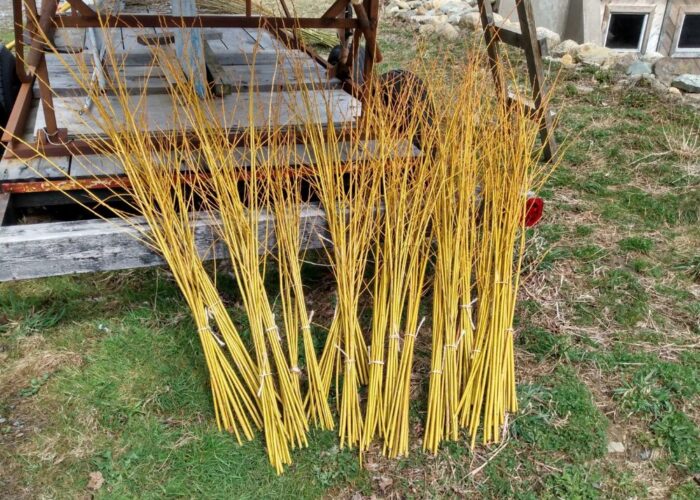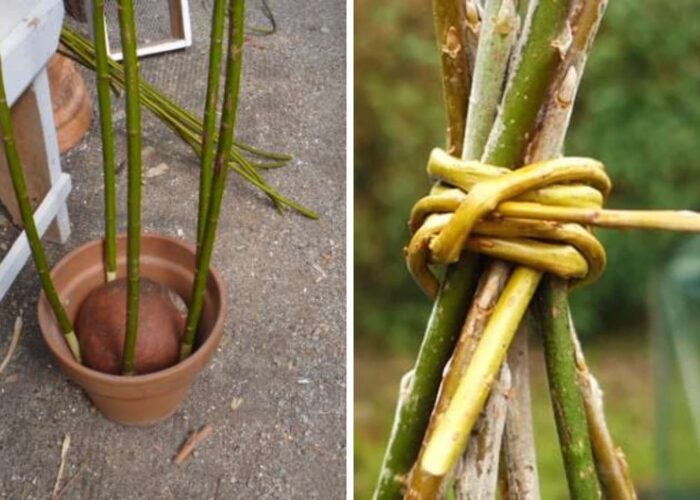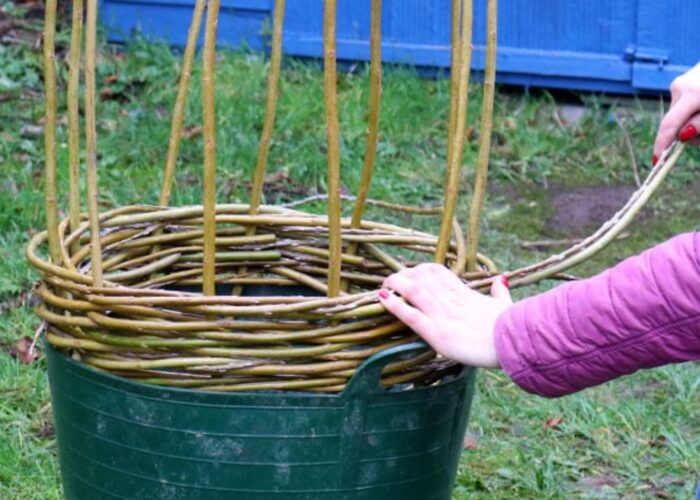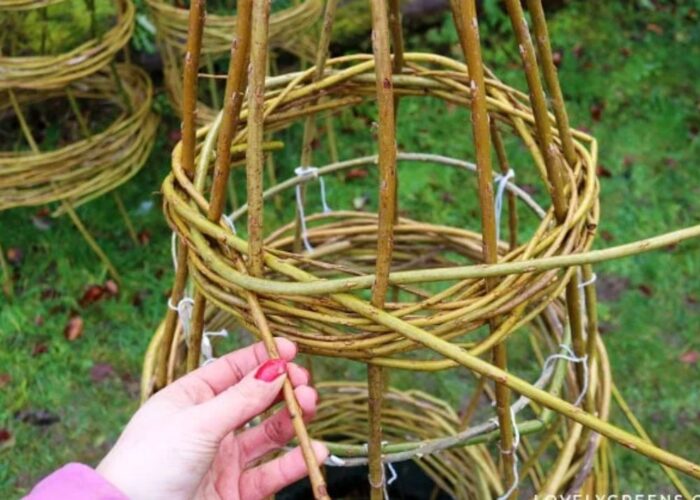Making a willow obelisk (aka cloche, trellis, teepee, wigwam plant support) is a wonderful way to blend functionality with natural beauty in your garden or outdoor space. Willow, with its supple branches and inherent strength, offers the perfect material for constructing a sturdy and visually appealing structure that can support climbing plants or serve as a decorative focal point.
In this guide, we’ll explore the step-by-step process of how to make a willow obelisk, from selecting the right branches to weaving and shaping the frame.
1. How to make a willow obelisk plant support?
Creating a willow obelisk plant support is an engaging and practical project that can add both structure and natural beauty to your garden. Willow obelisks are not only functional in supporting climbing plants but also serve as attractive focal points.
Here’s a step-by-step guide on how to make a willow obelisk plant support:
Materials Needed:
- Willow branches (fresh or dried);
- Pruning shears or secateurs;
- Twine or garden wire.
Steps by step:
Step 1: Gather and prepare willow branches
Collect willow branches, either fresh or dried. If using fresh branches, ensure they are pliable and easy to bend. Choose long and flexible willow branches for ease of shaping. Trim off any excess leaves and side branches using pruning shears.

Step 2: Create the obelisk frame
Take strong willow branches to create the main frame for the obelisk plant support. Insert them into the ground or a plant pot.

Step 3: Begin weaving the bottom
Start weaving additional branches around the base, intertwining them to create the structure of the obelisk. Weave in a spiral or crisscross pattern as you work your way up.
Step 4: Shape the obelisk
Gradually spread the branches outward as you move up, forming the conical shape of the obelisk. Adjust the height according to your preference.

Step 5: Secure the top and trim excess branches
Once you reach the desired height, secure the top of the obelisk by tying the branches together with twine or garden wire. Trim any excess length from the top of the obelisk for a neat finish.

Step 6: Install in the garden
Place the willow obelisk in your garden, ensuring it provides proper support for climbing plants.

Creating a willow obelisk plant support not only offers a practical solution for your garden but also allows you to showcase your creativity. Enjoy the process of crafting a unique and visually appealing structure that complements your garden’s overall design.
2. FAQs
2.1 What is the use of willow obelisk?
The willow obelisk serves as a multifaceted addition to the garden, offering both practical utility and aesthetic charm. Its primary role lies in providing sturdy support for climbing plants, allowing vines and flowers to ascend gracefully.
Beyond functionality, the willow obelisk introduces an artistic and decorative dimension to the garden landscape with its natural, elegant design.
2.2 How long do willow obelisks last?
The lifespan of willow obelisks depends on how they are preserved and cared for. If you want to extend their lifespan, you should paint or coat them with a protective layer that is waterproof and resistant to mold. It’s also advisable to regularly inspect and eliminate any cracks, decay, or insect infestations.
Some sources suggest that willow obelisks can endure for 5 to 10 years, but this also relies on the specific conditions of each individual obelisk.
2.3 How do you secure a willow obelisk?
To secure a willow obelisk, you can take several measures:
- Protective Coating: Apply a waterproof and mold-resistant protective coating on the surface of the obelisk. This helps prevent water damage and inhibits the growth of mold.
- Regular Inspection: Periodically check the obelisk for any signs of cracks, decay, or damage. Promptly address and repair any issues to prevent further deterioration.
- Insect Control: Keep an eye out for any insect infestations and take appropriate measures to eliminate them. Insect damage can weaken the structure of the obelisk.
- Proper Storage: If possible, store the willow obelisk indoors or in a sheltered area during harsh weather conditions. This can protect it from extreme elements and prolong its lifespan.
- Avoid Harsh Environments: Place the obelisk in a location that minimizes exposure to harsh weather conditions, such as prolonged periods of heavy rain or direct sunlight.
3. Final thought
In conclusion, making a willow obelisk offers both practicality and aesthetic appeal to any garden or outdoor space. By following the step-by-step guide provided, garden enthusiasts can create a sturdy and visually striking plant support structure using natural materials.
The versatility of the willow obelisk allows it to serve as a functional support for climbing plants while also adding a touch of natural beauty to the landscape.
With proper care and maintenance, a well-made willow obelisk can endure for several years, enriching the garden environment and providing a delightful focal point for years to come.
For any questions, don’t hesitate to send us an email us at info@thanhcongcraft.com or message us at WhatsApp: +84967485411. Hope to serve you soon! Best regard!


